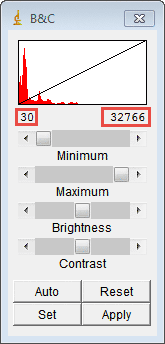

This is controlled both by any ROI and by selecting subsets of channels, z-slices or time points where relevant. When working with an image in ImageJ, I almost always have at least one duplicate lingering around for when when things inevitably go wrong.īut Image ‣ Duplicate… has an extra, hidden bonus: it’s supports extracting just a part of the image. Mistakes happen, and Edit ‣ Undo is rather limited it can undo some processing steps applied to a single image slice, but not always… and it can’t undo operations applied to image stacks We often want to process duplicates of an image in different ways, and then combine or compare the results. This applies the command Image ‣ Duplicate….īeing able to quickly duplicate an image matters for two main reasons: One of the most important ImageJ shortcuts to learn is Shift+ D to duplicate the image.
#Imagej software how to
Before we begin #īefore we embark on processing pixels, there are a couple of things we need to know how to do in preparation. It shows where to find the main point operations, including some tips (and warnings) about their use, along with a few exercises to try them out. This section introduces image processing with ImageJ. Live demo on spinning disk confocal offer rare opportunity for audience to see the pinhole patterns on Yokogawa disk.ImageJ: Point operations # Introduction # “Kohler Illumination” explores one of most important and confusing concept in optical imaging: Conjugate Planes.
#Imagej software download
Download “Super Resolution – case study of STED” by clicking “Super Resolution” explains the techniques applied on popular super-resolution modules. Download “Principles of Confocal” by clicking “Principles of Confocal” uses an artificial data set to illustrate how confocal achieves better contract, especially inĪxial direction, compare to widefiled microscopy. Download “Microscopy Resolution” slides by clicking In the end, it leads to a deeper discussion on what “resolution” really means. It reveals definition of Abbe limit, its formula and how to apply it. “Microscopy Resolution” follows the history on how physicist/microscopist gradually understand the nature of lightĪnd the resolution limit of a microscope. Please email Lai Ding you want to be added to our email list and receive workshop announcements

#Imagej software series
This workshop series is typically hold twice a year (consists around 4-5 seminars each time) and open to general public. The contents below are slides from NeuroTechnology Studio “Visual Microscopy Workshop Series”. Topic covers laser setting, detector adjustment, image format, average method, avoiding crosstalk … Live demo of guidelines to acquire better confocal image. Part III “Practical guidelines for acquiring a confocal image” Understanding how the modern confocal system works. Introduce principle of confocal and multiphoton imaging. Part II “Principle of Confocal Microscopy” Live demo on difference of point scan confocal and CCD-based widefield imaging systems Part I “Resolution: Know the limit and how to achieve it” Location: Hale BTM building Conference room 10012B (all dates) Please RVSP to Lai Ding Lai Ding, Ph.D, NeuroTechnology Studio. Whether you are new to optical imaging or already have some experience, you may find this workshop helpful to enhanced and expand your knowledge of optical imaging technology. This workshop mixes theory, practice, imaging tips and some history stories. NTS will host winter visual microscopy workshop focused on some basic and popular topics in the optical imaging technology, including resolution limit, confocal and practical guideline on how to achieve a “Good” image.


 0 kommentar(er)
0 kommentar(er)
